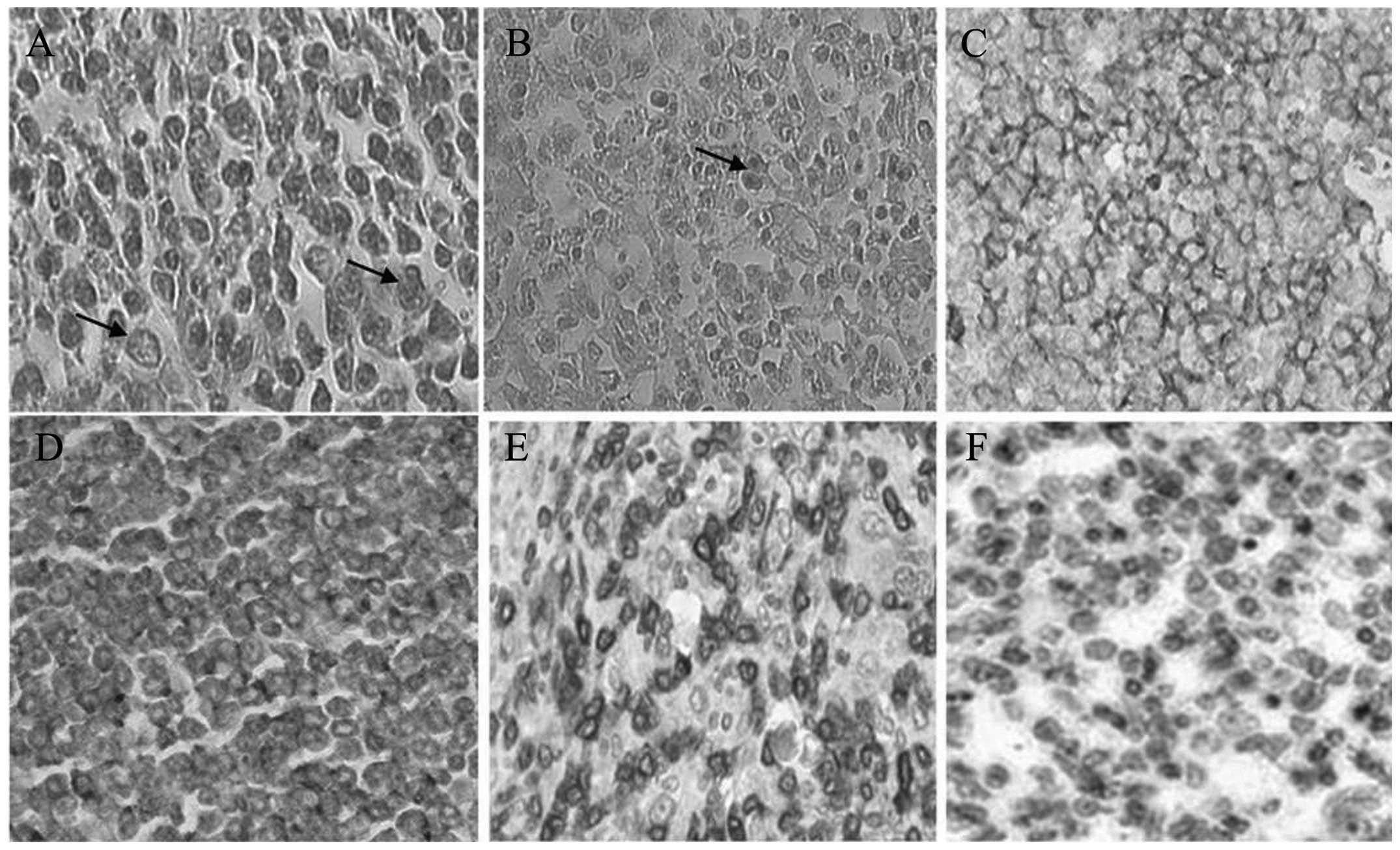First pathological study of canine primary breast lymphoma and the description of its clinicopathological characteristics as an animal model for human primary breast lymphoma
- Authors:
- Sanaz Rismanchi
- Samad Muhammadnejad
- Saeid Amanpour
- Ahad Muhammadnejad
View Affiliations
Affiliations: Cancer Models Research Center, Cancer Institute of Iran, Tehran University of Medical Sciences, Imam-Khomeini Hospital Complex, Tehran 1419733141, Iran, Research Center for Molecular and Cellular Imaging, Tehran University of Medical Sciences, Imam-Khomeini Hospital Complex, Tehran 1419733141, Iran, Cancer Models Research Center, Cancer Institute of Iran, Tehran University of Medical Sciences, Imam-Khomeini Hospital Complex, Tehran 1419733141, Iran, Cancer Research Center, Cancer Institute of Iran, Tehran University of Medical Sciences, Imam-Khomeini Hospital Complex, Tehran 1419733141, Iran
- Published online on: October 9, 2014 https://doi.org/10.3892/br.2014.369
-
Pages:
75-77
Metrics: Total
Views: 0 (Spandidos Publications: | PMC Statistics: )
Metrics: Total PDF Downloads: 0 (Spandidos Publications: | PMC Statistics: )
This article is mentioned in:
Abstract
Canine breast cancer (BC) and human BC are the most prevalent tumors in female dogs and humans, respectively. Several studies have indicated that canine BC is a good model for human BC. Unlike breast carcinomas, human primary breast lymphoma (PBL) is a rare tumor, but no case of canine PBL has been reported thus far. The current study presents a case of canine MC of the primary non‑Hodgkin lymphoma (NHL) type for the first time and subsequently questions the theory of considering it as a model for human PBL. A 2‑cm tumor was surgically removed from the left caudal abdominal mammary gland of a 6‑year‑old female dog of the terrier breed. Microscopic examination did not show any sign for the epithelial origin of the tumor. By contrast, histomorphological view and molecular pathological evaluation by immunohistochemistry showed that the tumor was of the diffuse large B‑cell lymphoma (DLBCL) type [cluster of differentiation 19+ (CD19+), CD20+, CD10+, B-cell lymphoma 6+, CD3‑, CD15‑]. According to the World Health Organization classification, DLBCL is considered to be an NHL. Canine NHL is common in dogs and certain investigators believe that the biological behavior and clinical course is extremely similar to human NHL, and therefore, consider it as a model of human NHL. To the best of our knowledge, the current study is the first report of canine PBL. As the most significantly reported human PBL histotype is the DLBCL type, the histomorphological and immunophenotyping characteristics of canine PBL in the study considerably match with human PBL and raise the hypothesis that it can be a model for human PBL.
View References
|
1
|
Sleeckx N, de Rooster H, Veldhuis Kroeze
EJ, Van Ginneken C and Van Brantegem L: Canine mammary tumours, an
overview. Reprod Domest Anim. 46:1112–1131. 2011. View Article : Google Scholar : PubMed/NCBI
|
|
2
|
Redig AJ and McAllister SS: Breast cancer
as a systemic disease: a view of metastasis. J Intern Med.
274:113–126. 2013. View Article : Google Scholar : PubMed/NCBI
|
|
3
|
Pinho SS, Carvalho S, Cabral J, Reis CA
and Gartner F: Canine tumors: a spontaneous animal model of human
carcinogenesis. Transl Res. 159:165–172. 2012. View Article : Google Scholar : PubMed/NCBI
|
|
4
|
Rivera P and von Euler H: Molecular
biological aspects on canine and human mammary tumors. Vet Pathol.
48:132–146. 2011. View Article : Google Scholar : PubMed/NCBI
|
|
5
|
Goldschmidt M, Peña L, Rasotto R and
Zappulli V: Classification and grading of canine mammary tumors.
Vet Pathol. 48:117–131. 2011. View Article : Google Scholar : PubMed/NCBI
|
|
6
|
Cheah CY, Campbell BA and Seymour JF:
Primary breast lymphoma. Cancer Treat Rev. 40:900–908. 2014.
View Article : Google Scholar
|
|
7
|
Cassali GD, Lavalle GE, De Nardi AB, et
al: Consensus for the diagnosis, prognosis and treatment of canine
mammary tumors. Braz J Vet Pathol. 4:153–180. 2011.
|
|
8
|
Ito D, Frantz AM and Modiano JF: Canine
lymphoma as a comparative model for human non-Hodgkin lymphoma:
recent progress and applications. Vet Immunol Immunopathol.
159:192–201. 2014. View Article : Google Scholar : PubMed/NCBI
|
|
9
|
Bienzle D and Vernau W: The diagnostic
assessment of canine lymphoma: implications for treatment. Clin Lab
Med. 31:21–39. 2011. View Article : Google Scholar : PubMed/NCBI
|
|
10
|
Pawlak A, Obminska-Mrukowicz B and Rapak
A: The dog as a model for comparative studies of lymphoma and
leukemia in humans. Postepy Hig Med Dosw (Online). 67:471–480.
2013.(In Polish).
|
|
11
|
Richards KL, Motsinger-Reif AA, Chen HW,
et al: Gene profiling of canine B-cell lymphoma reveals germinal
center and postgerminal center subtypes with different survival
times, modeling human DLBCL. Cancer Res. 73:5029–5039. 2013.
View Article : Google Scholar
|
|
12
|
Aviv A, Tadmor T and Polliack A: Primary
diffuse large B-cell lymphoma of the breast: looking at
pathogenesis, clinical issues and therapeutic options. Ann Oncol.
24:2236–2244. 2013. View Article : Google Scholar : PubMed/NCBI
|
|
13
|
Roschewski M, Dunleavy K and Wilson WH:
Diffuse large B cell lymphoma: molecular targeted therapy. Int J
Hematol. 96:552–561. 2012. View Article : Google Scholar : PubMed/NCBI
|
|
14
|
Hansmann ML and Willenbrock K: WHO
classification of Hodgkin's lymphoma and its molecular pathological
relevance. Pathologe. 23:207–218. 2002.(In German).
|
|
15
|
Vail DM and MacEwen EG: Spontaneously
occurring tumors of companion animals as models for human cancer.
Cancer Invest. 18:781–792. 2000. View Article : Google Scholar : PubMed/NCBI
|










